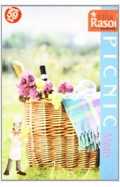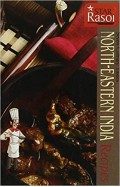Salon culture in Japan making art 1750 1900
By: Akiko Yano
-
Rs 9,596.00
- Rs 11,995.00
- 20%
You save Rs 2,399.00.
Due to constant currency fluctuation, prices are subject to change with or without notice.
The first publication to celebrate the British Museum’s rich collection of these technically sophisticated artworks created as part of Japanese cultural salons in the late 18th and 19th centuries, featuring lively figures in daily life and festivals, elegant birds and flowers, ferocious animals and lyrical landscapes.
In early modern Japan, cultural salons were creative spaces for people of all ages and social levels to pursue painting, poetry and other artistic endeavours, as serious but amateur practitioners. They all used a pen- or art-name. Individuals were therefore able to socialise and interact broadly through these artistic activities, regardless of official social status as regulated by the shogunal government. The idea of communal and collaborative creativity seems to have been especially ingrained around the area of Kyoto and Osaka. Each of the two cities had a distinct character: Kyoto was the national capital, where the emperor and aristocrats resided, and Osaka was the centre of commerce.
Only a fraction of these technically sophisticated artworks has previously been published in colour. With five essays by leading experts that explore this fascinating cultural phenomenon from different angles, and eight shorter insights that delve into specific historical aspects and the personal connections and legacies of cultural figures, this book offers a new perspective on Japanese art and society in the late 18th and 19th centuries.
The first publication to celebrate the British Museum’s rich collection of these technically sophisticated artworks created as part of Japanese cultural salons in the late 18th and 19th centuries, featuring lively figures in daily life and festivals, elegant birds and flowers, ferocious animals and lyrical landscapes.
In early modern Japan, cultural salons were creative spaces for people of all ages and social levels to pursue painting, poetry and other artistic endeavours, as serious but amateur practitioners. They all used a pen- or art-name. Individuals were therefore able to socialise and interact broadly through these artistic activities, regardless of official social status as regulated by the shogunal government. The idea of communal and collaborative creativity seems to have been especially ingrained around the area of Kyoto and Osaka. Each of the two cities had a distinct character: Kyoto was the national capital, where the emperor and aristocrats resided, and Osaka was the centre of commerce.
Only a fraction of these technically sophisticated artworks has previously been published in colour. With five essays by leading experts that explore this fascinating cultural phenomenon from different angles, and eight shorter insights that delve into specific historical aspects and the personal connections and legacies of cultural figures, this book offers a new perspective on Japanese art and society in the late 18th and 19th centuries.
Salon culture in Japan making art 1750 1900
By: Akiko Yano
Rs 9,596.00 Rs 11,995.00 Ex Tax :Rs 9,596.00
Zubin Mehta: A Musical Journey (An Authorized Biography)
By: VOID - Bakhtiar K. Dadabhoy
Rs 525.00 Rs 1,050.00 Ex Tax :Rs 525.00
Myths Illusions and Peace: Finding a New Direction for America in the Middle East
By: Dennis Ross
Rs 985.50 Rs 1,095.00 Ex Tax :Rs 985.50
The Origins of Political Order From Prehuman Times to the French RevolutioN
By: Francis Fukuyama
Rs 3,505.50 Rs 3,895.00 Ex Tax :Rs 3,505.50
Manning Up: How the Rise of Women Has Turned Men into Boys
By: Kay Hymowitz
Rs 746.25 Rs 995.00 Ex Tax :Rs 746.25
The Obama Syndrome: Surrender At Home War Abroad
By: Tariq Ali
Rs 1,165.50 Rs 1,295.00 Ex Tax :Rs 1,165.50
The Quest For Meaning: Developing A Philosophy Of Pluralism
By: Tariq Ramadan
Rs 1,185.75 Rs 1,395.00 Ex Tax :Rs 1,185.75
No similar books from this author available at the moment.
No recently viewed books available at the moment.
Zubin Mehta: A Musical Journey (An Authorized Biography)
By: VOID - Bakhtiar K. Dadabhoy
Rs 525.00 Rs 1,050.00 Ex Tax :Rs 525.00
Salon culture in Japan making art 1750 1900
By: Akiko Yano
Rs 9,596.00 Rs 11,995.00 Ex Tax :Rs 9,596.00













-120x187.jpg?q6)







-120x187.jpg?q6)





